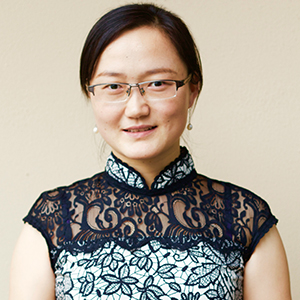Temple of Heaven
World Cultural Heritage Site: The Temple of Heaven (1998)
Introduction
Located to the southeast of Tiananmen, the Temple of Heaven was built in the 18th year of the Yongle Period of the Ming Dynasty (1420 AD) and given the name the Temple of Heaven and Earth. It used to be where emperors of the Ming and Qing Dynasties offered sacrifices to the gods of heaven and earth. In the 9th year of the Jiajing Period of the Ming Dynasty (1530 AD), another temple was built in the northern suburb of Beijing, which was used to offer sacrifices to the gods of earth. The function of the original Temple of Heaven and Earth witnessed a major change, that is, the emperors only offered sacrifices to the gods of heaven there since the establishment of the new temple in the suburb. As a result, the temple’s name was changed to the Temple of Heaven.
The structure of the Temple of Heaven is well-designed. The Circular Mound Alter and the Alter of Prayer for Good Harvests are located in the same courtyard. On the southern part of the courtyard, the Circular Mound Alter used to be where emperors prayed to the heaven and communicated with the heavenly gods. The Alter of Prayer for Good Harvests in the north, just like its name implies, used to be the place where emperors prayed for bumper harvests. The ancient Chinese philosophy was that the earth was a hemispheric structure while the earth formed into a square. As a result, the wall in the southern side of the temple comes in the shape of a square that represents the earth, while that in the northern side in the shape a circle which is a symbol of the heaven. These walls are commonly referred to as the walls of heaven and earth. Major buildings of the temple concentrate on the axis that stretches from the north to the south, including the Circular Mound Alter and the Alter of Prayer for Good Harvests. The mound and the alter are separated by walls but connected with a stone bridge that is 360 meters in length and 30 meters in width.
The Hall of Prayer for Good Harvests is the backbone of the temple. It used to be the place where emperors performed annual sacrificial ceremonies, which was to pray to the heavenly gods for good weather and harvests. The hall is in the shape of a circle with a diameter of 32 meters, rising 38 meters above the ground. It is a triple-gabled structure built on three levels of marble stone base, with the top glazed with golden color and the roof covered with blue tiles. Inside, there is a magnificent caisson ceiling carved with nine dragons that will never fail to attract any visitors. The whole structure of hall is unique without the use of beams and purlins, and the roof top is propped up by pillars. The four pillars in the middle are as tall as 19.2 meters, representing the four seasons. Surrounding the four pillars are two lines of pillars, among which 12 represent the 12 months in a year and 12 the 12 two-hour periods, into which the day was traditionally divided. The hall is erected on a three-layer white marble base that is as tall as 6 meters. When viewed as a whole, the hall makes you feel as if you’re floating on clouds.
The Palace of Abstinence, is located behind the West Heavenly Gate and used to be where emperors followed fasting routines before offering sacrifices to heaven. Outside the palace there are two ditches in the shape of concentric circles, surrounded by a corridor that houses 163 rooms. On the platform of the main hall stand a pavilion with a coppery statue inside and a pavilion with the tablet of the 12 two-hour periods. The coppery statue holds a fasting tablet in his hands, the archetype of which is said to be Wei Zheng, a celebrated government official of the Tang Dynasty. On the northeastern corner of the bell tower hangs a big chime made during the reign of Emperor Yongle of the Ming Dynasty. When offering sacrifices to heaven, emperors leave the Palace of Abstinence, and the chime is tolled until emperors arrived at the Circular Mound Alter. When the sacrificial ceremony would end, the chime would be tolled again, with the sound echoing around the temple. The sound would spice up the atmosphere of the whole ceremony.
With an area of 2,700,000 square meters, the Temple of Heaven is the largest existing ancient sacrificial architectural structure in China, holding a fascinating to visitors with its unique charm and magnificence. Temple of Heaven enjoys a worldwide reputation for its exquisite layout, unique structures, and majestic architecture. It has not only influenced the history of Chinese architecture but also is a legacy of architectural styles around the world.
Related activity you might be interested in
GREAT FAMILY CHINA TOUR
JULY 2024 We wanted to thank Grace at China Culture tour for organizing a great tour of China. We enjoyed our Beijing - Xian-Chengdu -Guilin -Yangshuo - Shanghai trip. Our local guides Bruce in Beijing, Susan in Xian, Jane in Chengdu, Mike in Guilin and Mary in Shanghai took care of us…read more details »
Teng Han L from SINGAPORE
Ready to Create a Unique Dream Travel?

